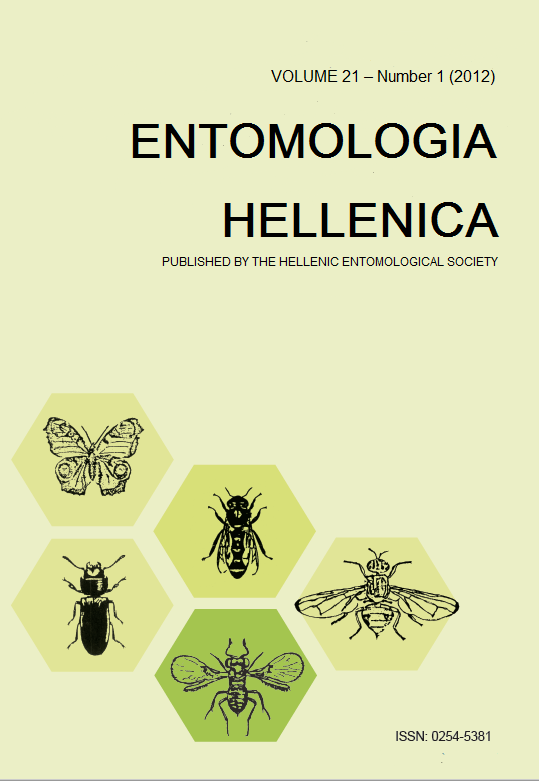Nonlinear models for describing development and fecundity of the pseudococcid predators Nephus includens and Nephus bisignatus

Abstract
Among several mathematical models used to describe the development or the fecundity of insects the equations of Enkegaard, Analytis, Bieri 1 and Bieri 2 could describe both biological features. In the current study these equations used to describe the development and fecundity of two pseudococcid predators [Nephus includens (Kirsch) and Nephus bisignatus (Boheman) (Coleoptera: Coccinellidae)] preying on Planococcus citri (Risso) (Hemiptera: Pseudococcidae) at constant temperatures (15oC - 35oC). All models have goodness of fit to data especially for development [R2 adj, RSS and AIC ranged 0.9908-0.9996, 0.0019-89.1752 (x10-4), and (-75.43) – (-31.07) respectively]. Optimum temperature (Topt) and upper threshold (Tmax) were calculated accurately by all models (Topt ranged 32.6-34.0oC for N. includens and 30.0-30.6oC for N. bisignatus and Tmax ranged 35.0-38.8oC for N. includens and 33.1-36.0oC for N. bisignatus, respectively). Lower temperature threshold (Tmin) was calculated accurately by Bieri-1 model (11.0 and 10.0oC for N. includens and N. bisignatus respectively) whereas Analytis model underestimated it (8.0 and 4.9oC). As far as fecundity is concerned the respective values were better fitted near the optimum temperature (25oC) [R2 adj, RSS and AIC ranged 0.8246-0.9704, 9.2729-24.0736 and (-246.82) – (-115.34) respectively]. Conclusively, from the tested models the Bieri-1 equation was proved as the most appropriate for the reason that could estimate correctly all the requested parameters concerning the development (Tmin, Topt, Tmax) as well as it could describe sufficiently the fecundity trend of the two predators.
Article Details
- How to Cite
-
Kontodimas, D. C. (2012). Nonlinear models for describing development and fecundity of the pseudococcid predators Nephus includens and Nephus bisignatus. ENTOMOLOGIA HELLENICA, 21(1), 13–24. https://doi.org/10.12681/eh.11514
- Issue
- Vol. 21 No. 1 (2012)
- Section
- Articles

This work is licensed under a Creative Commons Attribution-NonCommercial-ShareAlike 4.0 International License.
Authors who publish with this journal agree to the following terms:
Authors retain copyright and grant the journal right of first publication with the work simultaneously licensed under a Creative Commons 4.0 license.
Authors are able to enter into separate, additional contractual arrangements for the non-exclusive distribution of the journal's published version of the work (e.g. post it to an institutional repository or publish it in a book), with an acknowledgement of its initial publication in this journal. Authors are permitted and encouraged to post their work online (preferably in institutional repositories or on their website) prior to and during the submission process, as it can lead to productive exchanges, as well as earlier and greater citation of published work.


